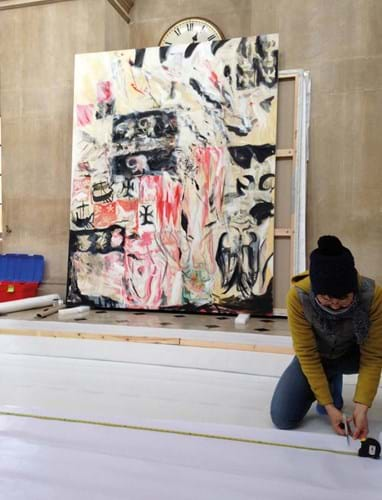The company began in 1966 when Peter Smith founded his firm and in 1985 he joined up with the late Anna Plowden to form Plowden & Smith.
During the pandemic restrictions the business experienced a rise in demand for third-party assessment of auction lots. It launched a new branded product called SmARTreport with prices starting at £250. The firm has clients including museums, collectors and the art and antiques trade.
ATG: What do your conservation specialists do?
Camilla Hughes-Hunt: All our conservators are formally trained. A number of them hold professional accreditations or doctorates covering almost every area of fine art and object restoration, including paintings, works on paper, ceramics, metal, stone, furniture, gilding, modern and contemporary art (sometimes featuring unusual materials).
The team is headed up by our conservation manager who oversees each project.
Who are your clients?
They are roughly evenly split between private individuals and private and public organisations that take in the length and breadth of the art world.
The levels vary year on year, but in any given year will always include fine art insurers, auction houses, shippers, antique dealers, art galleries, museums, art consultants, interior designers etc.
Do you see the sector changing over the coming years?
We’re bound to see a change, and we’ve seen some changes already because of the pandemic, and we are waiting to see the trickle-down impact of Brexit.
Focusing on the positives, we anticipate the demand we saw during lockdown for our independent condition reporting services to stay strong.
We’ve also been extremely encouraged by the very strong results coming out of provincial auction houses. For example, the Renaissance bronze ostrich that recently sold at Cheffins for more than £1m.
If the focus on online transactions continues, then the prestige of a smart central London bricks and mortar premises will become less important to buyers and sellers, so this – along with other factors – may result in us seeing more museum-quality pieces being sold up and down the UK, not just at the major London-based international auction houses.
Lastly – and I’m going out on a real limb here – we may finally witness the long-promised resurgence in brown furniture!
Describe a recent conservation or restoration project that the firm is proud of
We take on such diverse work that it’s very difficult to pick just one project.
Restoring a 17th century marquetry inlaid longcase clock is one example of a satisfying investigative project, because the absence of an original marquetry panel meant that our conservators had to research designs on similar clocks from the period, as well as being guided by the marquetry on other parts of the clock.
Another highlight was a 17th century John Riley oil painting and its frame. We always like these projects that draw on several of our specialist departments, in this case both the canvas and the frame.
















